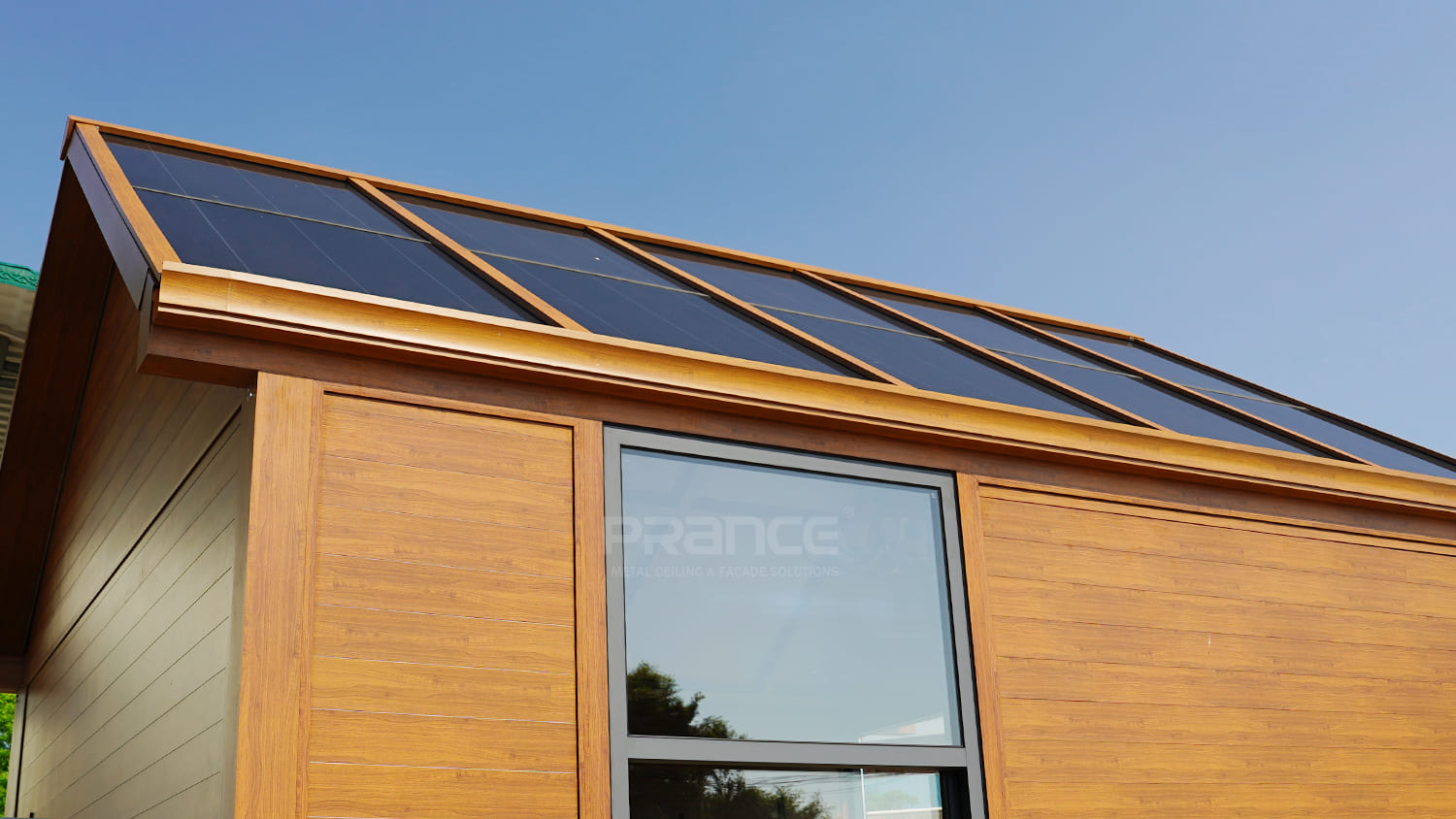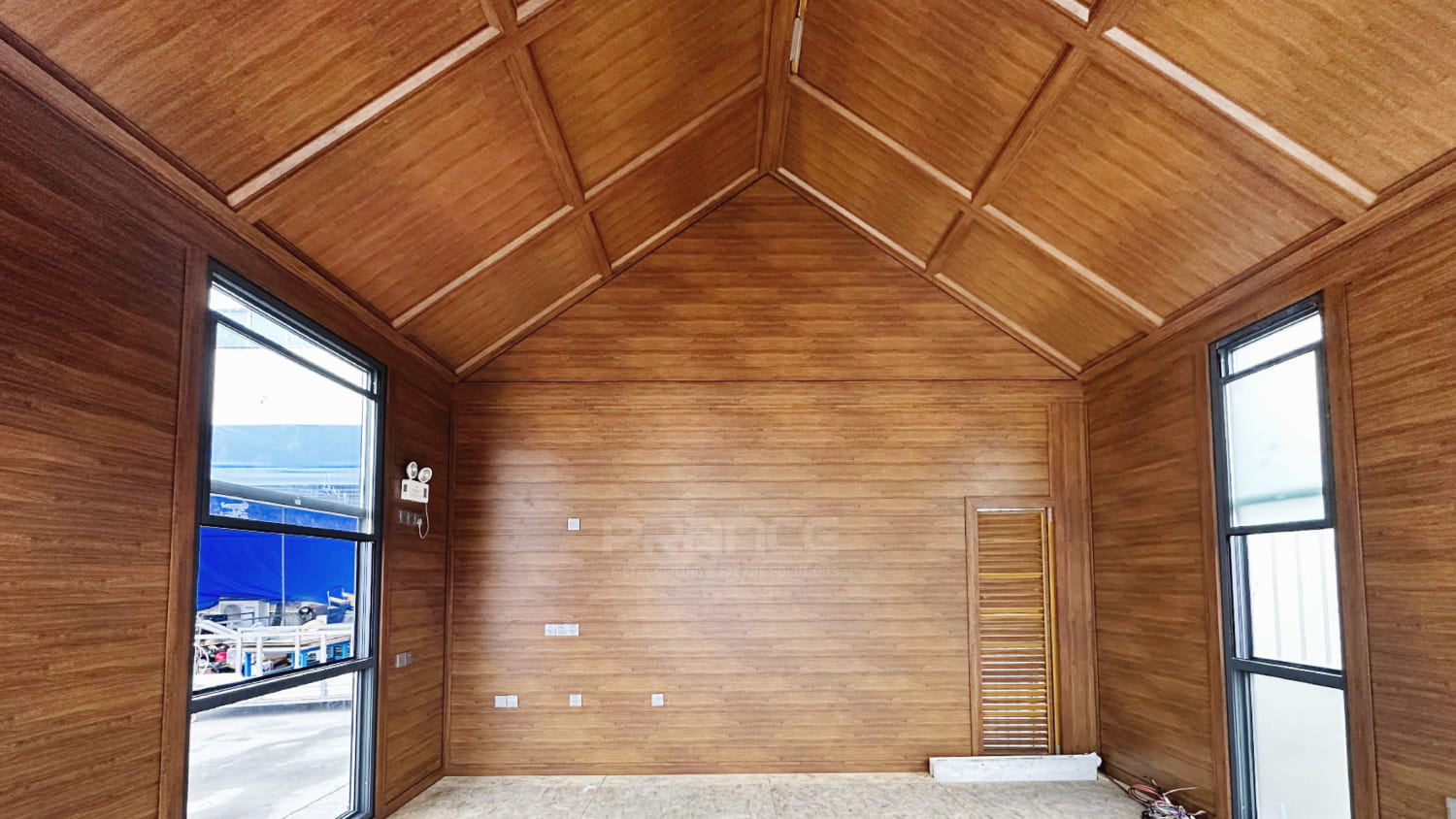PRANCE metalwork is a leading manufacturer of metal ceiling and facade systems.
How Much Is a Prefab Home and What Affects Its Cost?
How much is a prefab home? is a frequent query. Though the response varies depending on a few key elements, it's straightforward. Every component influences the ultimate pricing in some way, from materials and features to site location and design decisions.
For those who desire modern, inexpensive living, prefab houses are increasingly a wise alternative. Companies such as PRANCE Metalwork Building Material Co. Ltd provide modular houses that four people can put up in two days. Built from robust aluminium and steel, these dwellings can even feature solar glass, reducing power costs. Shipped in containers,
Let us analyse the actual specifics to know how much a prefab house is and what causes the price to rise or fall.
Base Price of the Prefab Structure
Start with the base price of the house itself to determine the cost of a prefab home. Usually, this comprises the fundamental structure—walls, roof, windows, and doors. A simple single-unit prefab house can run between $30,000 and $80,000, depending on size and design.
The cost can rise to between $90,000 and $144,000 if your plan calls for a larger double-wide design or a multi-unit configuration. PRANCE provides premium, ready-to-install modular houses within these categories. The necessary building components, insulated panels, outside finish, and aluminium and steel frame are usually included in these base pricing.
Cost of Custom Layouts and Features

The degree of personalisation is a key determinant of how much a prefab home is. The cost remains lower if you like a basic open-plan design. The price rises, however, with bespoke kitchens, additional rooms, premium flooring, or unusual designs.
While they increase material use and lengthen manufacturing time, custom elements such as built-in furnishings, enlarged patios, and sliding glass doors provide flair and convenience. PRANCE provides versatile modular designs, and this sort of customization increases the home's use while also raising its cost.
The good news is that, even with personalised features, prefab homes are more economical than conventional constructions as the work is done in a factory-controlled environment, hence saving time and lowering labour expenses.
Installation and Labor Expenses
The cost to install a prefab house is another key component of the jigsaw when enquiring about its price. Choosing PRANCE prefab homes has several advantages, chief among them being that they require just four people and two days for installation.
This fast installation significantly reduces labour costs. Traditional buildings could require hired labour for weeks or even months, which increases overall expenses. PRANCE houses decrease on-site expenses even further, given that most of the systems—like lighting, ventilation, and smart curtains—are pre-installed in the factory. Prefab houses truly start to save money with this speed and efficiency.
Transport and Shipping Costs
One major benefit of prefab houses is their container-fit construction, which reduces their cost and delivery difficulty. However, the overall cost still depends on the distance the house travels.
Sending the container across the nation or overseas increases the cost; transporting it locally is less expensive. However, given the dwellings' small size and transport-oriented design, logistics are much easier than conventional building materials. This facilitates planning and estimating. Therefore, always include shipping in the overall budget when enquiring about the cost of a prefab house.
Solar Glass and Energy Efficiency Upgrades

PRANCE's prefab houses include solar glass as a choice. Though it has an initial expense, this is a game-changer for energy savings. Still, thinking long-term is crucial. Solar glass converts sunlight into usable energy. That implies lower power costs, particularly if your area has year-round excellent sunshine. With time, the first expense of solar glass can be offset by energy savings.
Including additional energy-efficient elements such as improved insulation, smart lighting, and automated ventilation systems will also affect the price of a prefab house. However, these elements reduce your carbon impact and enhance daily comfort.
Site Preparation and Local Requirements
Though prefab houses come ready to build, the land still has to be prepped. This includes utility connections, foundation or base buildin,g and ground levelling.
Depending on the location, local building norms or rules can call for permits or inspections, which could increase time and expense. Extra site work could be required for isolated or uneven ground. Though they are easily missed, these concealed expenses should be included in the overall estimate determining the cost of a prefab house.
Finishes and Interior Selections

Once the house is established, you can add personal touches. The price might change greatly depending on the wall finishes, lighting fixtures, cabinetry, and flooring. If you choose conventional finishes, the price remains on the cheaper side. Choosing quality materials such as hardwood floors, stone worktops, or sophisticated lighting systems will raise the total cost, though.
The beauty of prefab buildings is that much of this may be incorporated before the home even arrives, making the process speedier and neater—but nonetheless, these decisions count when enquiring about the cost of a prefab home.
Extra Modules or Future Expansion
Many prefab houses are constructed with future adaptability in mind. Modular designs allow you to grow later by adding a second module or a new wing. Every new section, thus, incurs additional expenses. Knowing up front how much additional modules could cost helps even if you don't intend to add them immediately. While any addition will affect the overall cost structure, PRANCE's modular strategy encourages long-term development.
Conclusion
A prefab home costs how much, then? Your desires will determine the response. While a feature-rich double-wide configuration with solar glass, bespoke furnishings, and smart systems might cost $144,000 or more, a basic prefab home can start under $40,000.
The base structure, custom features, solar upgrades, shipping, labour, site preparation, and finish selections are key cost elements. What really makes PRANCE prefab homes such a great choice, though, is their combination of speed, sustainability, and strength—all packaged in a contemporary, container-ready design. Built for today's world and tomorrow's demands, these homes include quick assembly, robust aluminium and steel, and optional energy-saving solar glass.
Start planning your modern prefab space with PRANCE Metalwork Building Material Co. Ltd, where every square metre is made to perform.




















